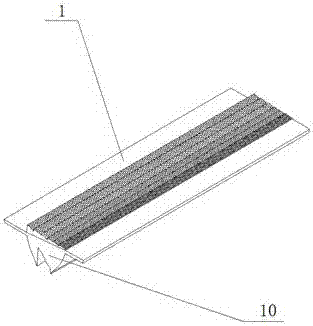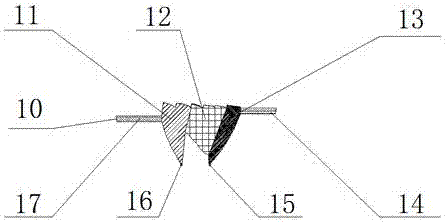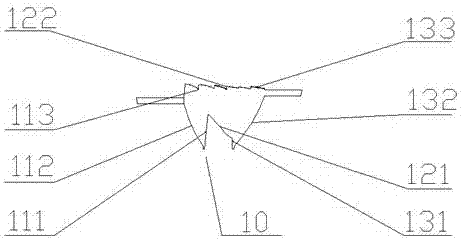Wall washing lens with high utilization rate
A utilization rate and lens technology, applied in the field of lighting, can solve the problems of increased processing difficulty, increased glare, waste of luminous flux, etc., and achieve the effects of reducing light pollution, reducing glare, and high utilization rate
- Summary
- Abstract
- Description
- Claims
- Application Information
AI Technical Summary
Problems solved by technology
Method used
Image
Examples
Embodiment 1
[0032] Such as Figure 1-5 As shown, a wall-washing lens with high utilization rate includes the first catadioptric system 11, the refraction system 12 and the second catadioptric system 13 connected in sequence; the first catadioptric system 11, the refraction system 12 and the second catadioptric system The system 13 is an optical functional part of the present invention, which plays the role of deflecting the direction of light and redistributing light energy.
[0033] The first catadioptric system 11 has a first refraction surface 111 inside the lens 1, a first total reflection surface 112 on the side of the lens 1, and a first light-emitting surface 113 on the top of the lens 1;
[0034] The second catadioptric system 13 has a second refraction surface 131 inside the lens 1, a second total reflection surface 132 on the side of the lens 1, and a second light-emitting surface 133 on the top of the lens 1;
[0035] The refraction system 12 has a third refraction surface 121...
PUM
 Login to View More
Login to View More Abstract
Description
Claims
Application Information
 Login to View More
Login to View More - R&D
- Intellectual Property
- Life Sciences
- Materials
- Tech Scout
- Unparalleled Data Quality
- Higher Quality Content
- 60% Fewer Hallucinations
Browse by: Latest US Patents, China's latest patents, Technical Efficacy Thesaurus, Application Domain, Technology Topic, Popular Technical Reports.
© 2025 PatSnap. All rights reserved.Legal|Privacy policy|Modern Slavery Act Transparency Statement|Sitemap|About US| Contact US: help@patsnap.com



